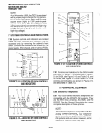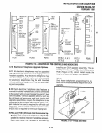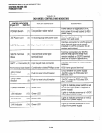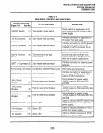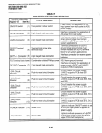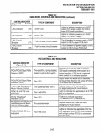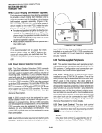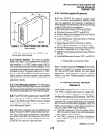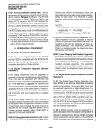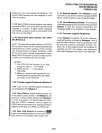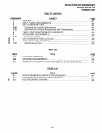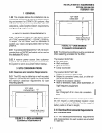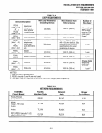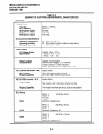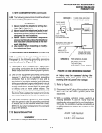
INSTALLATION-SYSTEM DESCRIPTION
SECTION 200-096-202
FEBRUARY 1991
10.01 PCTU3 (Common Control Unit):
The lat-
est version of the common control unit is PCTU3,
which contains
Release
3 software. The PCTU3
can be installed in DK96, DK56, and DK24. Like
earlier PCTU versions, the PCTU3 contains the
system’s main microprocessor and microproces-
sor bus, battery-protected memory circuits, time
switch logic, conference logic, and system tones.
The PCTU3 also has a music-on-hold/background
music source interface, and connectors to mount
an optional DTMF receiver PCB (CRCU) for DISA,
TIE lines, standard telephones, and peripherals.
l
The PCTU3 measures 7.5 by 5.5 inches (190 by
140 mm) and connects to the KSU’s backplane
with a 40-pin male connector.
11 PERIPHERAL EQUIPMENT
11 .OO Digital Telephones (Release 3)
11 .Ol
There are twodigital telephones, the 1020SD
and the 1020H, compatible with the STRATA DK
systems. See the General Description for a more
complete description of these phones.
11 .I 0 Digital Telephone Upgrade Options
(Release 3)
11.11
Digital telephones may be upgraded to
transmit and receive simultaneous voice and data.
They may also be upgraded with off-hook call
announce, loud ringing bell, and headset capabil-
ity. If the telphone is upgraded to transmit and
receive simultaneous voice and data, it cannot be
upgraded with any of the other options. However,
it can be upgraded simultaneously with off-hook
call announce and loud ringing bell or headset
capability.
11 .I2 Each digital telephone also features a
standard modular handset cord, and is connected
to the system with a single-pair modular line card
(7 feet length cord included). No extra wire pair is
required for the various upgrade options, but a
custom external speaker cable (HESC-65A) is
required for the loud ringing bell.
PDIU-DI (Integrated data interface unit):
Digital
telephones may be upgraded with a PDIU-DI to
receive and transmit simultaneous voice and
data; data and voice calls can be made indepen-
dently of each other. The PDIU-DI is easily
installed, replacing the normal digtal telephone
base.
NOTES:
1. The PDIU-DI will function with all slots,
except slots 1 I w 14 in DK96.
2. PDKU circuits 1 N 7can support PDIU-Dls.
DVSU (Off-hookCall Announce Upgrade):
Each
digtal telephone may be upgraded to receive
intercom handsfree answerback calls when the
handset is off-hook by installing an OCA up-
grade assembly. This assembly, called the
DVSU, is installed inside the telephone base
with plug-in connectors.
HHEU (Loud Ringing Bell/Headset Upgrade):
Each digital telephone may also be upgraded to
provide a loud ringing bell interface and a modu-
lar headset jack by installing a loud ringing bell/
headset upgrade assembly. The assembly
consists of a small PCB (HHEU) which is in-
stalled inside the telephone base with plug-in
connectors.
11.20 Digital Direct Station Selection Console
(Release 3)
11.21
The Digital Direct Station Selection Con-
sole (DDSS) is an optional, dedicated answering
station incorporating a busy lamp field, and it can
be used with electronic or digital telephones. It is
normally used on systems with a heavy volume of
incoming calls. A DDSS console may be used with
one of four designated telephones. If equipped
with a PCTU3, DK96, DK56, and DK24 can sup-
port up to four DDSS consoles (DK24, if equipped
with the PCTUS, will not support DDSS consoles).
For more information on DDSS console features,
see the General Description.
11.22
A DDSS console must be assigned to a
particular station when the system configuration is
defined in programming. All four DDSS consoles
can be assigned to asingle’station, orfourdifferent
DDSS consoles may be assigned to four different
2-20



